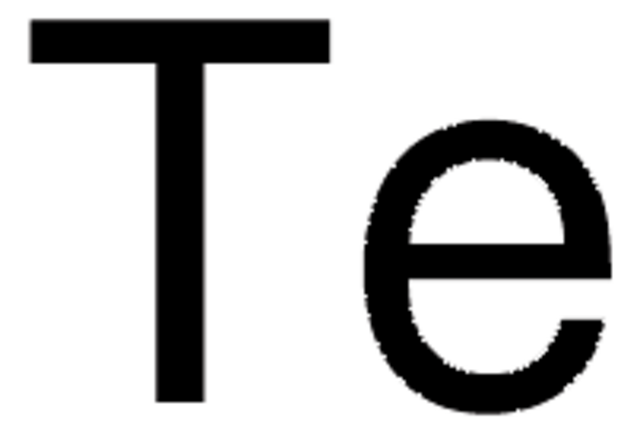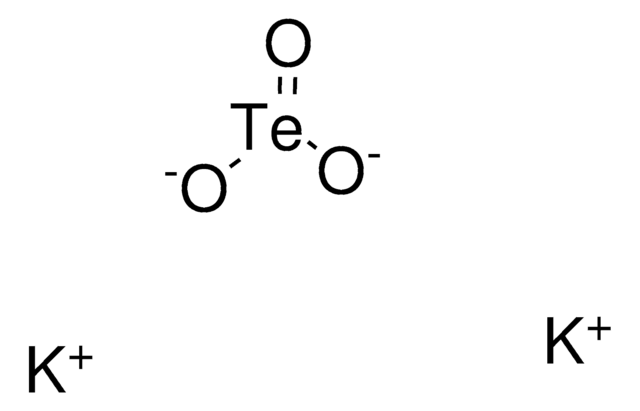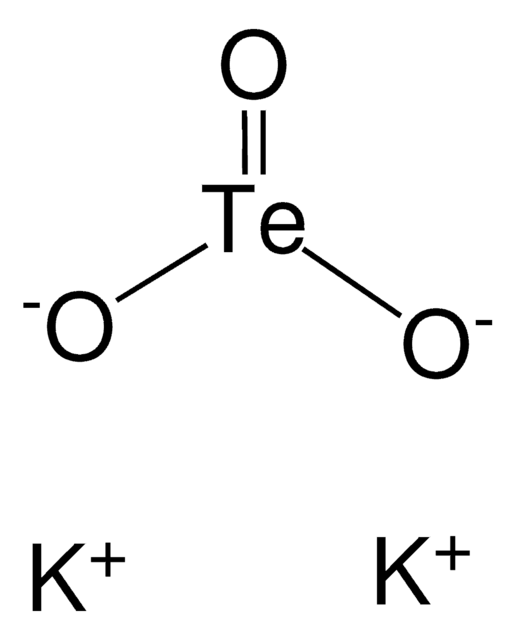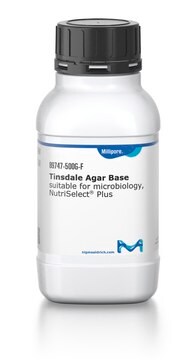400688
Sodium tellurite
−100 mesh, 99%
Synonym(s):
Disodium trioxotellurate
Sign Into View Organizational & Contract Pricing
All Photos(2)
About This Item
Linear Formula:
Na2TeO3
CAS Number:
Molecular Weight:
221.58
EC Number:
MDL number:
UNSPSC Code:
12352300
PubChem Substance ID:
NACRES:
NA.23
Recommended Products
Quality Level
Assay
99%
form
powder
particle size
−100 mesh
SMILES string
[Na+].[Na+].[O-][Te]([O-])=O
InChI
1S/2Na.H2O3Te/c;;1-4(2)3/h;;(H2,1,2,3)/q2*+1;/p-2
InChI key
VOADVZVYWFSHSM-UHFFFAOYSA-L
General description
Sodium terllurite is an alkali tellurite that is majorly used in the formation of glasses due to its unique properties which include good transmittance, refractive index, and high chemical resistance. It can be used as a tellurite source for the preparation of quantum dots.
Signal Word
Danger
Hazard Statements
Precautionary Statements
Hazard Classifications
Acute Tox. 3 Dermal - Acute Tox. 3 Inhalation - Acute Tox. 3 Oral
Storage Class Code
6.1D - Non-combustible acute toxic Cat.3 / toxic hazardous materials or hazardous materials causing chronic effects
WGK
WGK 3
Flash Point(F)
Not applicable
Flash Point(C)
Not applicable
Personal Protective Equipment
dust mask type N95 (US), Eyeshields, Gloves
Choose from one of the most recent versions:
Already Own This Product?
Find documentation for the products that you have recently purchased in the Document Library.
Customers Also Viewed
T Thurnheer et al.
Molecular oral microbiology, 33(3), 234-239 (2018-01-13)
Bacteria residing in oral biofilms live in a state of dynamic equilibrium with one another. The intricate synergistic or antagonistic interactions between them are crucial for determining this balance. Using the six-species Zürich "supragingival" biofilm model, this study aimed to
Activation energy and conductivity relaxation of sodium tellurite glasses
Pan A and Ghosh A
Physica B: Condensed Matter, 59(2), 899-899 (1999)
Mohammed M Safhi et al.
Acta poloniae pharmaceutica, 73(3), 675-682 (2016-08-02)
Tellurium (Te) is a semiconductor and is frequently doped with copper, tin, gold or silver. It is also used to color glass and ceramics and is one of the primary ingredients in blasting caps. Little is known about Te biological
Jingwen Gao et al.
Talanta, 199, 178-183 (2019-04-07)
In this work, an innovative aptasensor based on electrochemiluminescence resonance energy transfer (ECL-RET) from CdTe quantum dots (QDs) to a cyanine dye (Cy5) fluorophore for the determination of Ochratoxin A (OTA) was fabricated. A strong cathodic ECL emission was obtained
Structural properties and crystallization of sodium tellurite glasses
Santic A, et al.
Croatica Chemica Acta. Arhiv Za Kemiju, 81(4), 559-567 (2008)
Our team of scientists has experience in all areas of research including Life Science, Material Science, Chemical Synthesis, Chromatography, Analytical and many others.
Contact Technical Service











